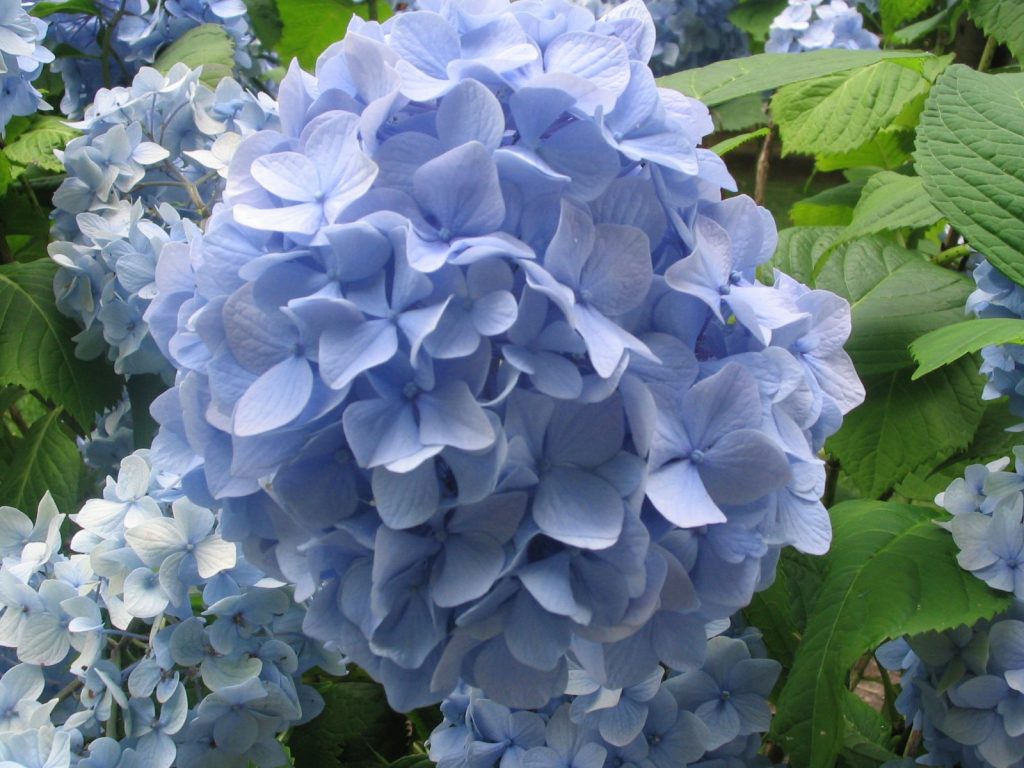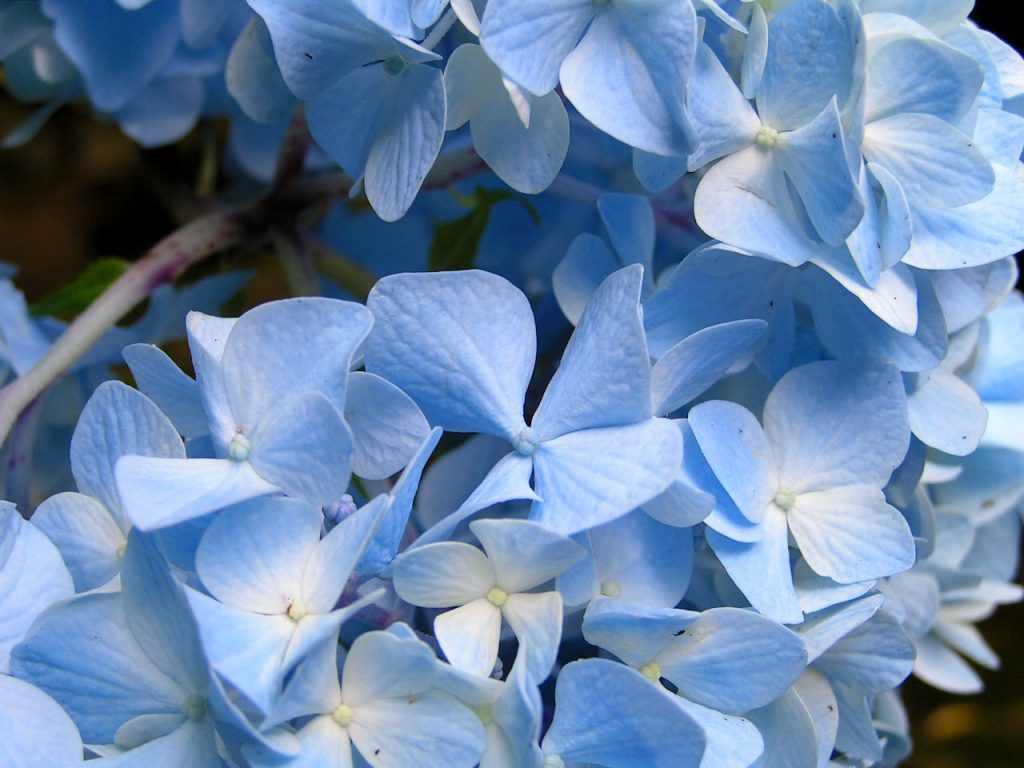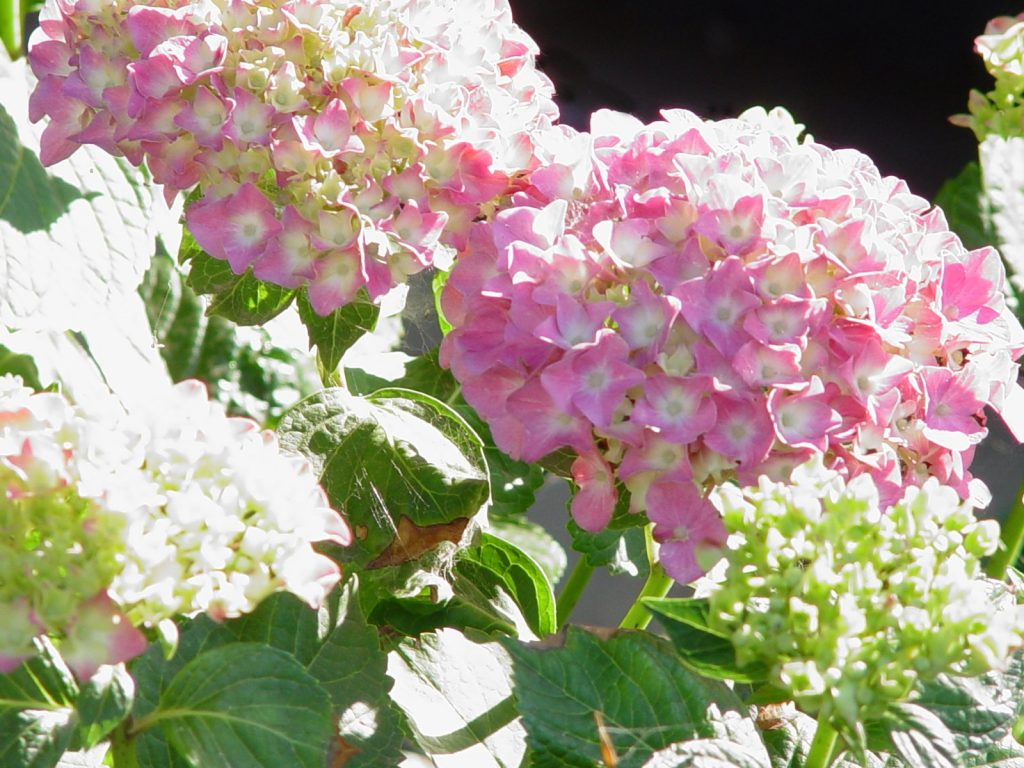How to dry hydrangea correctly - tips and rules
Garden flower crops are distinguished by long flowering. At the same time, florists have long adapted to preserve the beauty of its buds in a dry form for the winter, making up different compositions for home and office decor. There are several ways to dry your hydrangea yourself.

How to dry hydrangea
The right time to cut
Most varieties of garden hydrangea, especially paniculate, are characterized by a color change with sexual maturation, closer to the end of the flowering stage: in warm regions it turns from light pink, and in cold regions it acquires a purple hue.
As the inflorescences mature, they lose their density: the soft petals dry out, their structure begins to resemble a paper sheet.
If you intend to dry flower buds, do not allow the flowers to completely dry directly on the bush, because over time, they will soften and turn brown. However, one should not rush to disrupt it. If you cut the buds at the stage of active flowering, then a large amount of moisture will remain in the stems, and the period of complete drying will take longer, which will affect the decorativeness of the dead wood.
The most suitable time for cutting is the ripening peak (usually in September - early October), when all the petals of the upper sepals open. But this must be done at the first manifestation of a rich contrasting shade.
Basic ways
There are several methods to dry hydrangea at home.

Dried hydrangea
- Head down. The bud is suspended by the shoots and in this state they are allowed to dry completely. Usually, a bouquet is dried in this way, when short stems do not make it possible to put the cut in a container.
- In ordinary water. Cut flowers are cleaned of foliage, placed in water at the midpoint of the shoots and placed in a cool room. Keep the hydrangea without adding liquid, waiting to dry as the moisture dries.
- In glycerin. The cut is placed in an aqueous solution of glycerin (2: 1), which will saturate the stems and petals. As the water evaporates, only glycerin will remain in the plant cells. As a result of glycerin impregnation, the shoots will acquire elasticity and shine. It is recommended to dry in one container no more than 5 copies.
- In silica gel. The stems are pruned 2.5 cm from the base. A layer of silica gel is poured into a plastic container, completely covering the bottom. The buds are placed with their heads down, preventing them from touching. The gel is added until the inflorescences are completely immersed in it. The container is covered with a lid and placed in a dark place for 4-5 days.
- Flat drying. Each inflorescence is separated from the stem and folded into a book, having previously shifted on both sides with a cotton pad divided into two parts. Full drying takes about 10-14 days. Instead of a book, they use a press, assembled from two sheets of plywood, between which layers of cardboard and parchment paper are laid.
- Bulk drying.Edible salt or semolina is poured into the container, the buds are laid out in them, giving the necessary shape and the filler is added.
However, drying methods have a number of advantages and disadvantages. Drying in air in a suspended state is simple and does not require any costs, however, dead woods are brittle and do not differ in long-term storage.
If dried in water or glycerin, the buds do not fade and retain their decorative appearance for a long time. But these drying methods will take longer.
Painting dry buds
Special substances help to paint dried flowers in the desired shade, incl. acrylic paints and professional Rit dyes for decorating dry flowers.

How to dry hydrangea for the winter
Technology:
- boil water in a large-diameter saucepan;
- the dye is dissolved in proportion, according to the instructions for use, without leaving crumbs and undissolved clots;
- to obtain light shades, dry buds are dipped in boiling water for a short period of time, if desired, to paint in a deeper color, the amount of processing is increased.
If the dried bouquet retains dark areas that appeared during growth on a bush or due to improper drying, it is possible to pre-bleach the petals in bleach for linen, and only then start painting. This will make it possible to coat the hydrangea evenly.
You can also paint dried flowers with aerosols. It is advisable to carry out the procedure in the open air, starting from the inside and smoothly moving to the top and stem. Drying time from the moment of painting is about half an hour, after which a second layer of paint is applied. To add shine, the painted flower is covered with automotive varnish on top.
What problems can you face
Most often, when drying flowers at home, they are faced with the appearance of dark spots on the petals. This is due to the late trimming of the workpiece material. However, even with a successful result, sometimes it is not possible to keep dead wood for a long time.

How to dry a hydrangea flower for decoration
To extend the shelf life of winter dried flowers:
- do not keep a dry colored bouquet in direct sunlight;
- it is necessary to maintain humidity in the room without overdrying the air;
- remove accumulated dust with an air stream from the syringe so as not to damage the integrity of the petals.

